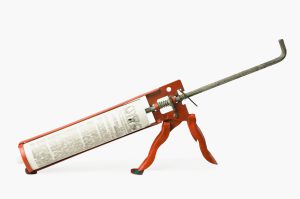Because the elastomer production in the past several years has migrated to highly engineered compounding variations, it created a myriad of possibilities for the materials to be safely utilized. Elastomers are commonly employed in gasket application not only thanks to the modern manufacturing process, but also due to the inherited properties of the material. In other words, characteristics like flexibility, resilience, damping and high elongation have made it the material of choice for gaskets, isolators and seals, to name a few. Let’s explore the most commonly employed elastomers in the gasket applications.
1. Silicone
Since it exhibits the best low temperature flexibility of all elastomers, has a high temperature resistance (up to 482 degrees Fahrenheit) and includes dielectric properties, silicone is best used in pharmaceutical environmental and food applications. The material performs excellently in environments that see a lot of temperature fluctuations and it’s relatively pure, making it suitable for applications where quality control and hygiene are required.

2. Fluoroelastomer
Fluoroelastomer is the ideal material for situations when chemical and high temperature resistance are required, such as aerospace seal applications that imply fuel support and hydraulic systems or automotive fuel applications that need high concentrations of biodiesel.
3. EPDM
The material’s excellent resistance to steam and polar substances as well as its amazing electrical insulating properties make EPDM the material of choice for refrigerator and cold-room environments. In addition, because it resists ketones, diluted acids and alkalines along with the excellent heat and weather resistance, EPDM can be utilized in weather-stripping and automotive cooling system applications.
4. NBR
NBR is the most popular choice for fuel handing application in the aerospace and automotive industries mainly because it exhibits above decent resistance to oils, fuel and solvents. In addition, it can withstand a maximum temperature range of up to 250 degree Fahrenheit and is reliable in environments with high wear and tear, cold flow and abrasion.
5. Neoprene
The unique properties of Neoprene recommend the material as the best choice for electric and aquatic environment applications. Not only does the material display an impressive water resistance, but it can withstand moderate and constant exposure to UV rays and mild solvents. Neoprene has a maximum temperature range of up to 280 degrees Fahrenheit and shows above-medium impact, abrasion and flame resistance properties.
Metal gaskets versus rubber/plastic gaskets
The advantage of rubber and plastic gaskets over their metal counterparts stems for the material’s ability to undergo a high degree of deformation and hence, create a very tight seal. On the other hand, metal gaskets lack the flexibility and will need a high compressive force in order to create the same tight seal. This is why for applications that require sealing – from marine and boat manufacturing to pump manufacturing and water treatment – it is advisable to use both metal and rubber gaskets.
It is necessary to mention that devices that perform the same role can replace gaskets in certain applications. For instance, if you need to fill in a small gap between components, then a spacer or a shim would be more suited for leveling purposes. In addition, an o-ring would perform much better when you need to create a barrier to prevent leakages.
